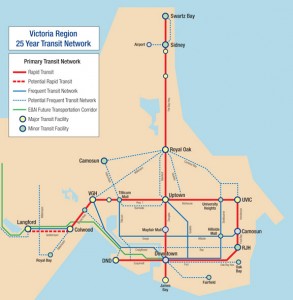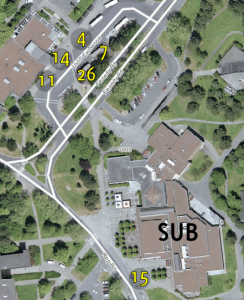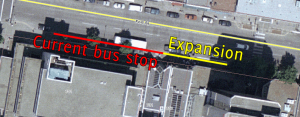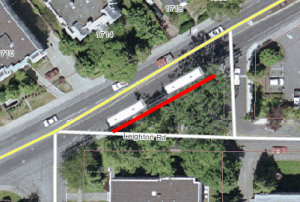
With the Victoria Regional Rapid Transit planning coming along and the province-wide 2030 strategic plan just finished, BC Transit held a pair of workshops recently to discuss their latest planning endeavour: The Victoria 2035 “Transit Future” as well as a status update on the rapid transit plan itself. I managed to miss the first meeting at Victoria City Hall on Monday so I was forced to make the trek out to suburban hell (aka the Westshore) to see what the fuss was all about.
It seems I managed to time my visit just right, as I managed to hit a lull in traffic and thus had the nearly undivided attention of several senior BC Transit staff, including the CEO Manuel Achadinha. This also meant I was blissfully free of the “rail ranters” who like to show up to these events and are convinced that the reason Victoria doesn’t have rail is a giant conspiracy theory that can only be solved by ranting at whatever poor transit staff that happens to be in front of them.
With the corridor nailed was nailed down a few months back, the rapid transit planning people were asking for feedback on detailed placement within the alignment (median vs curb-side) and type of vehicle (from buses to rail of all kinds). After those have been made, detailed costing analysis needs to be done. It was stressed to me that this will include capital and operating costs. I can only hope that the marketing and messaging works around this so that the “buses are cheaper” meme doesn’t rear its ugly head. The final report is due by the end of this year or early next, to match the 2011 federal and provincial budget cycles.
Beyond the rapid transit project is the Frequent Transit Network, lacking a catchy title or separate branding, but it “aims to provide a network of all-day, every day routes with a 15 minute minimum service, 15 hours a day, 7 days a week.” The new 15 UVic/Downtown Express (nee Dogwood Line) and the upcoming 16 Express (nee 26A, details can be found in the 2010/11 Service Plan [PDF, pg 2]) are part of this network, as are more traditional buses such as the 6 and 14.
I am glad I braved the six lanes of traffic on the Old Island highway plus being stuck in rush hour traffic on McKenzie to get there. I am cautiously optimistic that something may come of the rapid transit project because of BC Transit’s excellent recent track record with the new express buses and service expansion. However, this work may make me more hopeful than maybe a should be. After all, there are a lot of old, dusty reports listed on this page alone. If you want to add your voice to see such a bright future, check out the Community Consultation page under the June 2010 heading. Maybe some of our voices will be heard at the senior levels of government.



